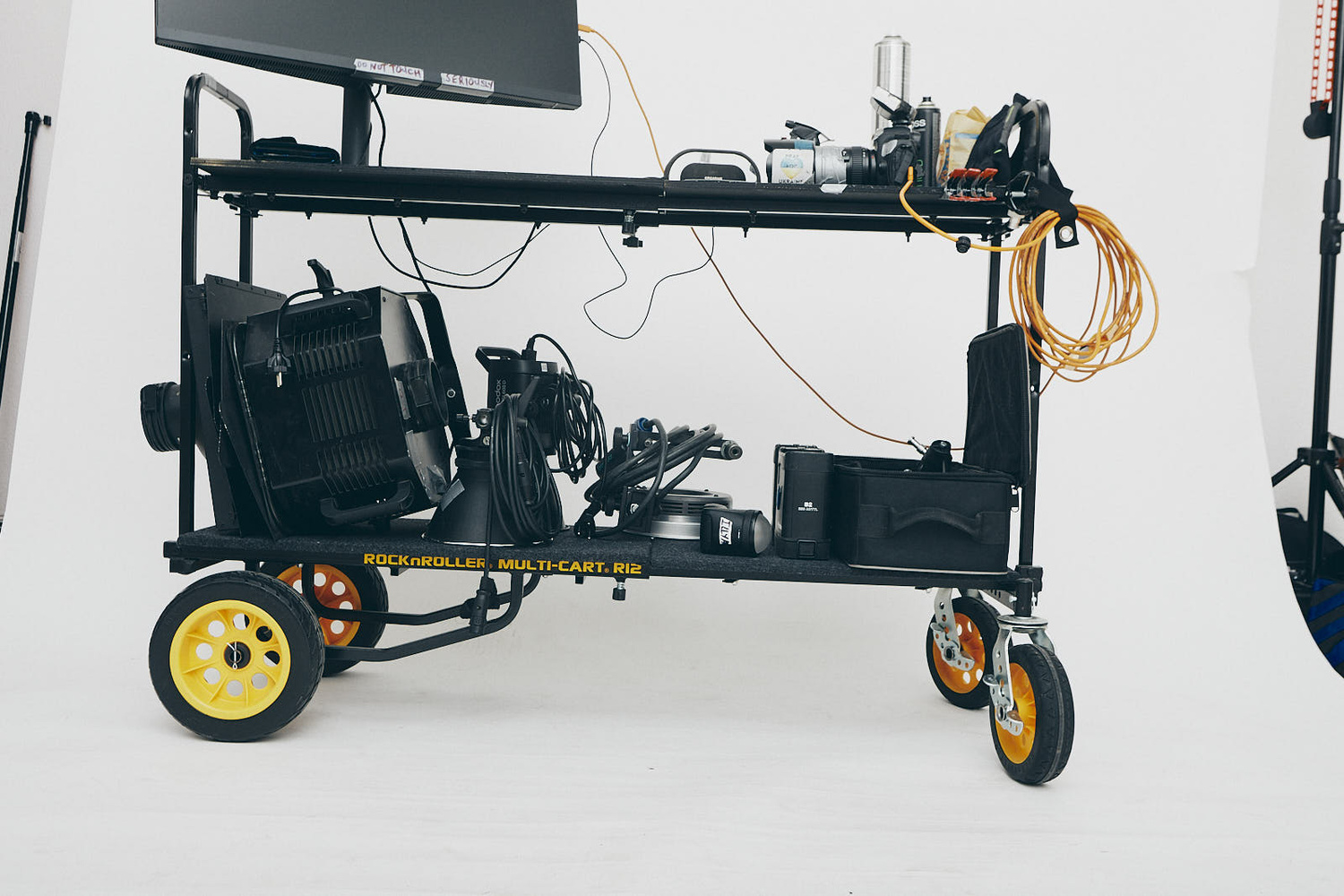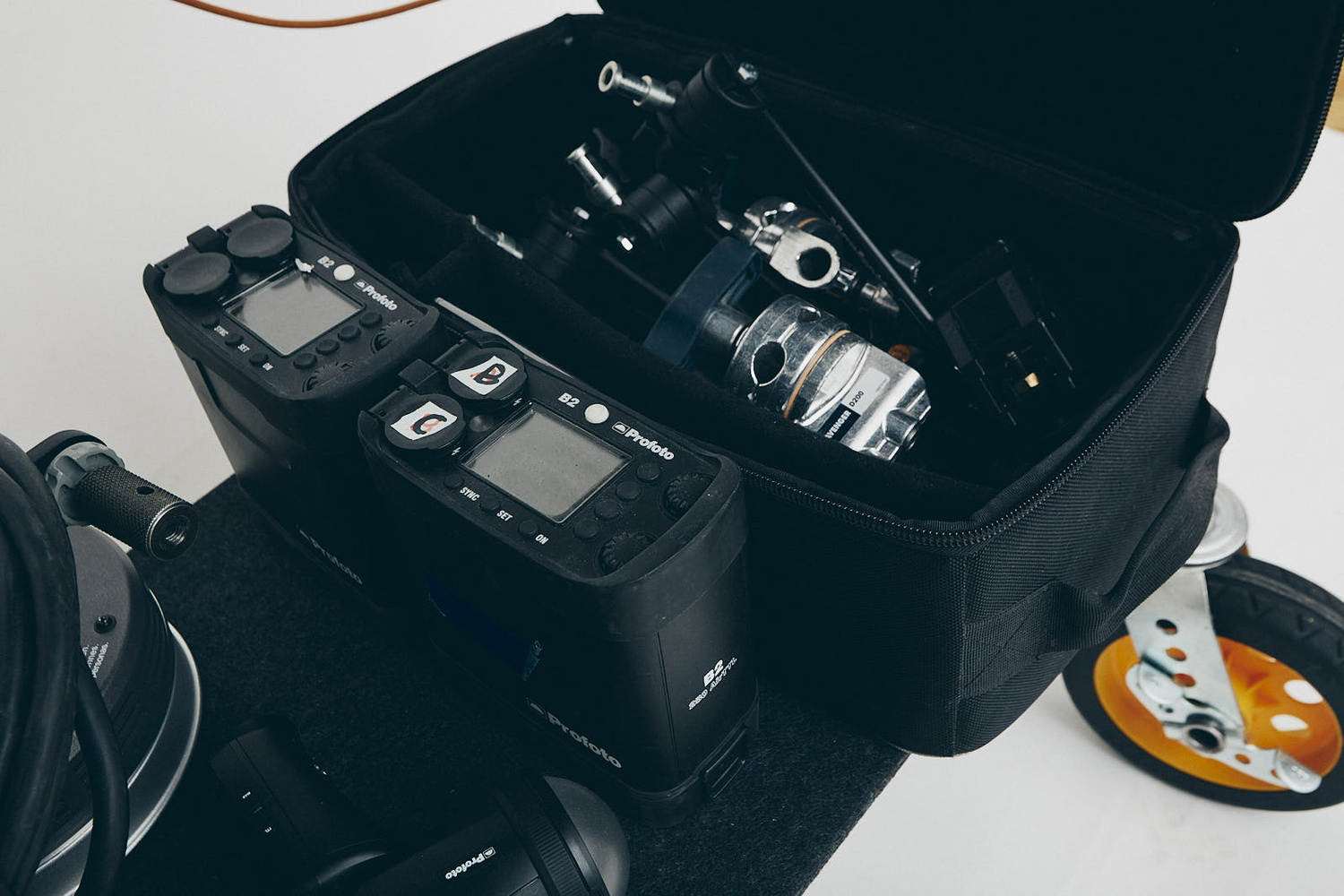[ad_1]
There is something innately annoying about having to carry stuff. I can’t decide if it’s shoulder pain, back pain, or just a general need to do physical activity. If you are a photographer who has to bring out more gear than a camera bag’s worth, this is a product for you. Don’t think so? Then read on!
Introduction
Made by RocknRoller, this cart was originally designed for the music and entertainment industry. It does a great job of being an ideal solution for that market. I used it in such a capacity when throwing a party in the studio – the DJ had the whole cart for his setup and loved it. However, that is only how I occasionally use this product. Other 99% of the time, it is my tether trolley, light modifier storage, and gear mover. It does a great job at being just that – the ultimate solution for getting a lot of gear from point A to point B, and then turning into a workstation.
There’s a reason for the title – photography equipment builds up really fast. Before you know it you are carrying light stands, tripods, computers, and much more to a location in the middle of nowhere without any vehicle access. Assignments that demand more than a camera are typically the ones when you need such a product. Last time I checked, it was more affordable to get a cart instead of several large camera bags that fit a light stand. Also, such bags have limited customization options, as such you can’t turn one into a tether station or a DJ table. This is the reason I pick a RocknRoller over a Think Tank Photo Stand Manager. Let’s see what things make it worth your while.
Build Quality
There are many things that can go wrong with such a product. From shelves breaking to wheels slipping to the whole thing collapsing. A high-end version of this product: a grip cart is made from solid pipe metal. They are transported in production vans and typically are bulky and quite expensive to make.
For RockNRoller to make a product that’s en-par with grip cart in terms of durability and quality, while also being portable and lightweight, they need to have some clever design solutions. Which they do.
Let’s start from the bottom: the wheels. They are made with solid tires that won’t go flat. While the suspension won’t be great when compared to air-filled tires, the benefit is that you never worry about having a flat tire slow you down. The rim itself is lightweight plastic, however quite thick, proving not to be a weak point. There are breaks on the two rotating wheels which stop the cart from rolling. One downside I must point out is that the brakes themselves don’t have a lot of surface area to push on with your foot. Moving upwards, we have 3 solid rails that hold up the bottom shelf, which are covered in wool fabric. Then on, we have 2 foldable side rails which are there to hold the top shelf. Made out of wood, it is covered in a non-slip material that appears to look like water but actually isn’t. This provides a great surface for your gear such as cameras, monitors, etc. It would be great to see this shelf also covered in the same wool-like material as the one on the bottom. Unfortunately, it is not possible to swap them around as the top shelf attaches with bolts, while the bottom one with latches.
The bottom shelf can definitely take quite some abuse, as it rests on 3 solid metal bars. I had no problem putting a bunch of sandbags, light stands, and other gear on it. You can put up to 500 lbs of load on it without a worry. As for the top shelf, I would not give it the same payload as the bottom one. Given that it latches onto the sides, it definitely can hold less, but then again I do put my monitor, camera, and other miscellaneous stuff on it. When transporting, I’ve also put things such as the Profoto ProFresnel (weighting 22 lbs) without a worry on it. Overall, a very successful design.
Features
Moving on to the features, this cart claims to have 8-1 capability. The particular model I have, the R12 can be used in its short and long configuration, the long one doubles the length of the cart, which while making it harder to maneuver, is quite useful as a workstation and a solution for carrying a light stand. Then, you can use it with or without the bottom shelf. If all you have is a bunch of boxes, it makes sense to use it without a bottom shelf, however, as soon as you carry smaller items such as lights, chargers, cables, and other stuff, a bottom shelf becomes a necessity. On top of that, you can purchase the optional top shelf, which I would recommend highly, as it converts the cart into a workstation. Lastly, you can fold the two vertical supports inwards making the whole thing smaller. So much so it fits in the back of a regular car.
Then you can choose to accessorize your cart with things such as handle bags for light stands, multi-pocket pouches, and so on. It is great to see a cart with the ability to be tailored for every photographer’s specific needs.
Some features that I would say are missing from the cart are things such as a top wool deck, some clamps on the side to secure light stands horizontally, and last but not least, large shelves with side walls to prevent gear from falling off.
What I Liked
- Clever design
- Price
- Durability
- Functionality
What Could Be Improved
- Dedicated light stand mounting option
- Shelves with side walls
Conclusion
Overall, RockNRoller Multicart is one of the most cost-effective and efficient solutions to carry a lot of gear for a photographer. Being on par with production carts, this sometimes overlooked product can solve a lot of problems for photographers who work on-location or need to get a lot of gear from one place to another in a short period of time without extra weight on their shoulders.
[ad_2]
Original Source Link